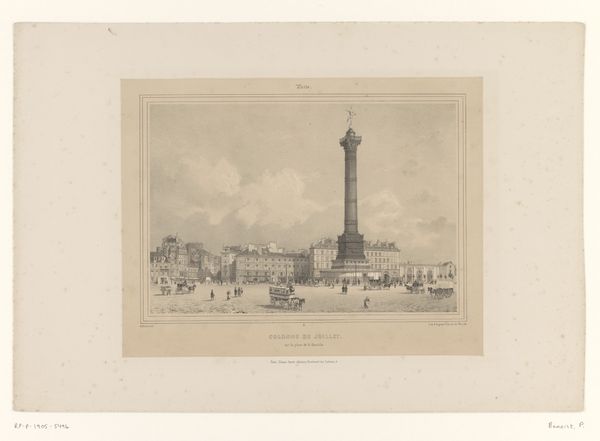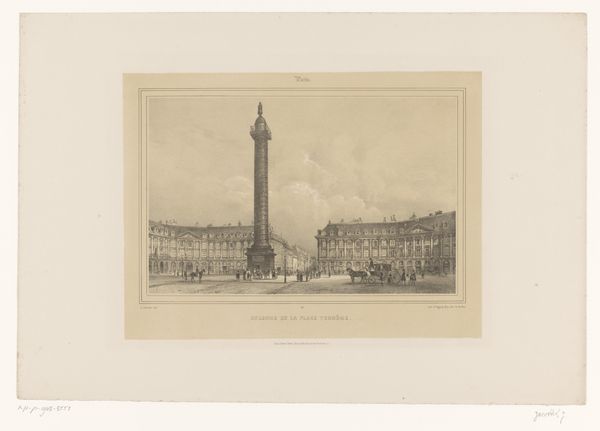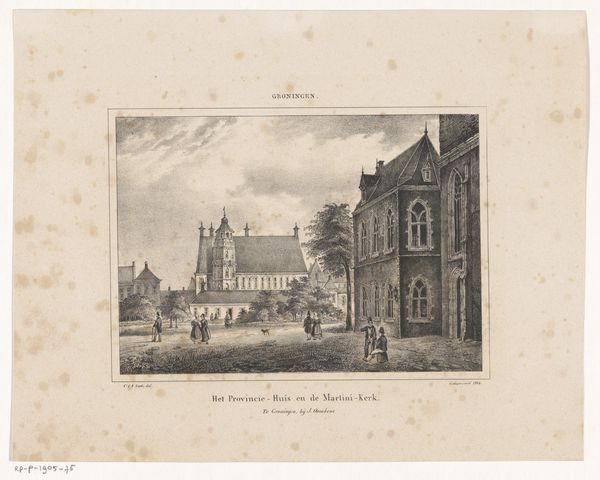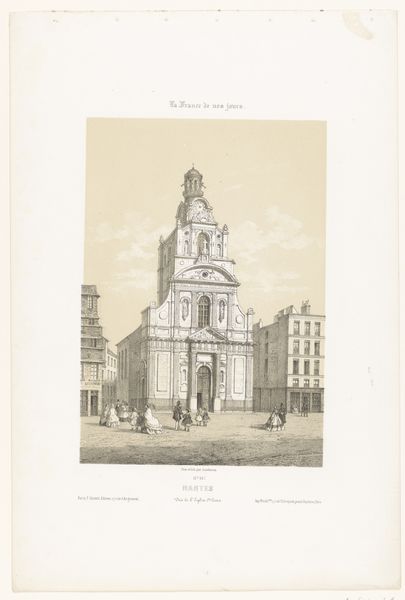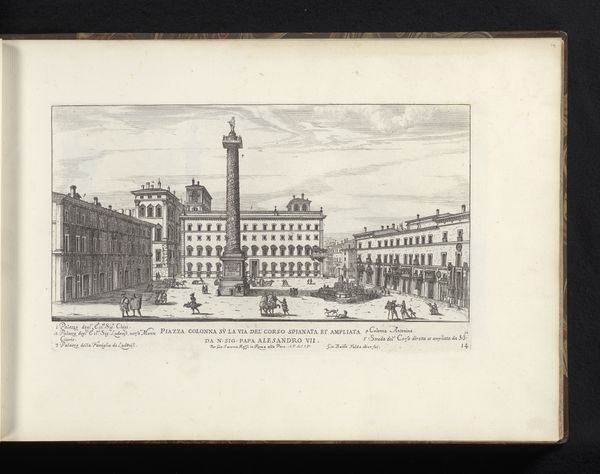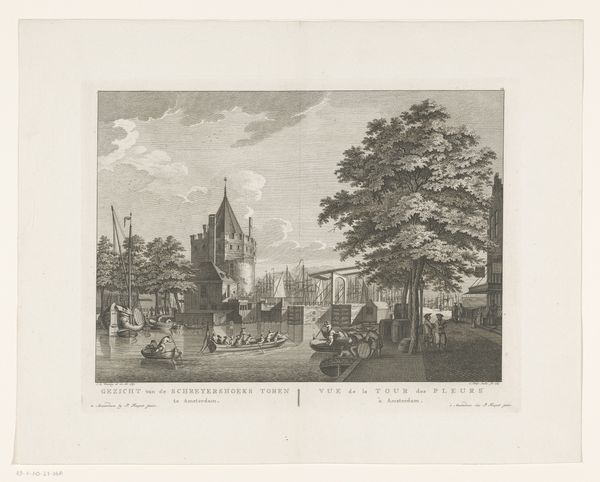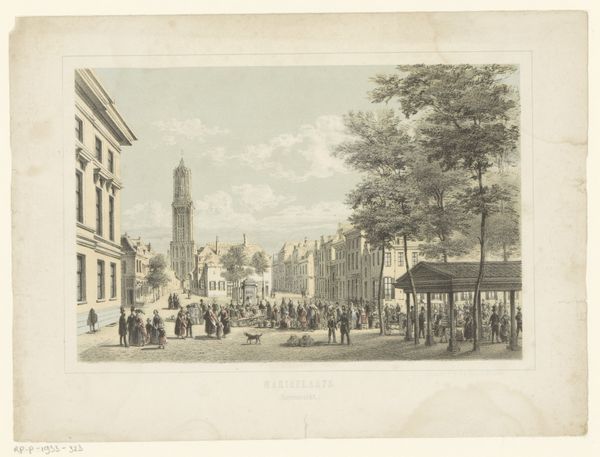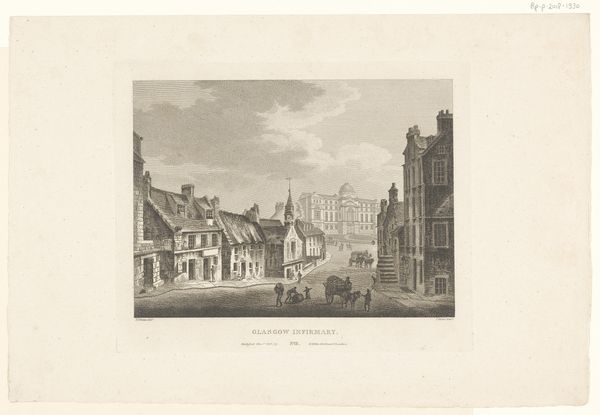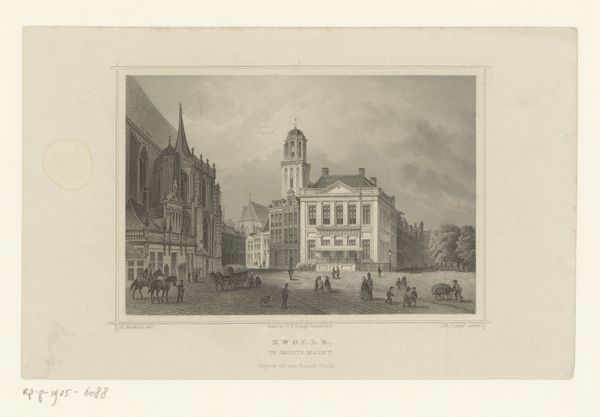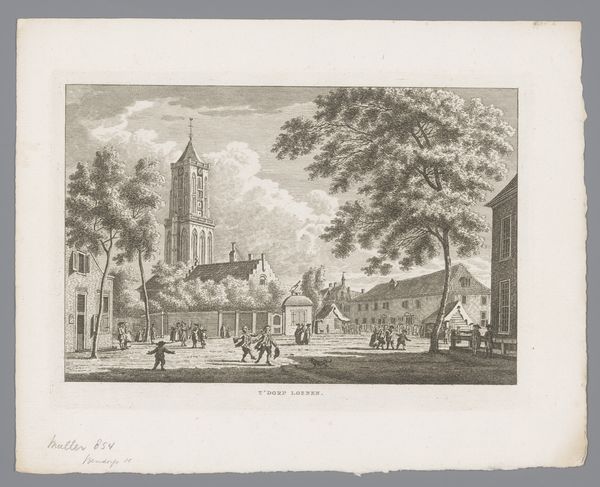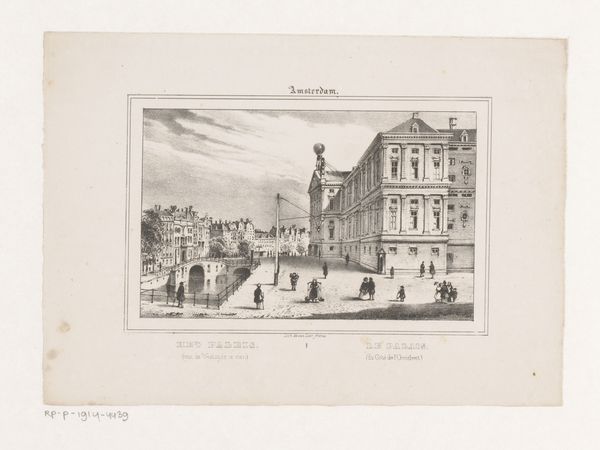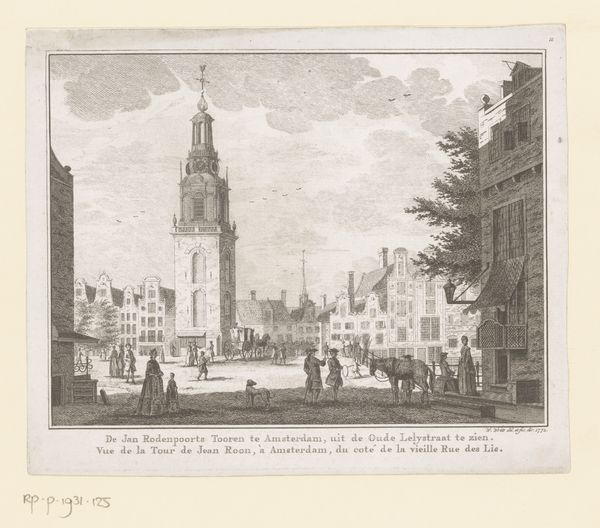
Zicht op de Place Maréchal-Foch en de Cours Saint-Pierre in Nantes 1853 - 1856
0:00
0:00
leonaugusteasselineau
Rijksmuseum
Dimensions: height 291 mm, width 434 mm
Copyright: Rijks Museum: Open Domain
This print, by Léon Auguste Asselineau, shows the Place Maréchal-Foch in Nantes. It was made using a lithographic process – a planographic method, meaning that the image is drawn on a flat surface, in this case a stone, using a greasy crayon. The material qualities of the lithograph, with its subtle gradations and soft tonality, lend themselves well to capturing the nuances of the urban scene. The process involves the skilled application of the crayon to create the image, followed by chemical treatments that allow the ink to adhere only to the drawn areas. The resulting print bears the marks of both the artist's hand and the industrial processes of reproduction. Lithography emerged as a significant medium during the 19th century, coinciding with the rise of capitalism and mass production. It enabled the widespread dissemination of images, serving as a powerful tool for communication and documentation. The medium democratized art, allowing for the creation of affordable prints that could be distributed far and wide. Looking at this print, it's essential to consider how its materiality and production contribute to its meaning, challenging traditional hierarchies between fine art and more ‘popular’ forms.
Comments
No comments
Be the first to comment and join the conversation on the ultimate creative platform.
